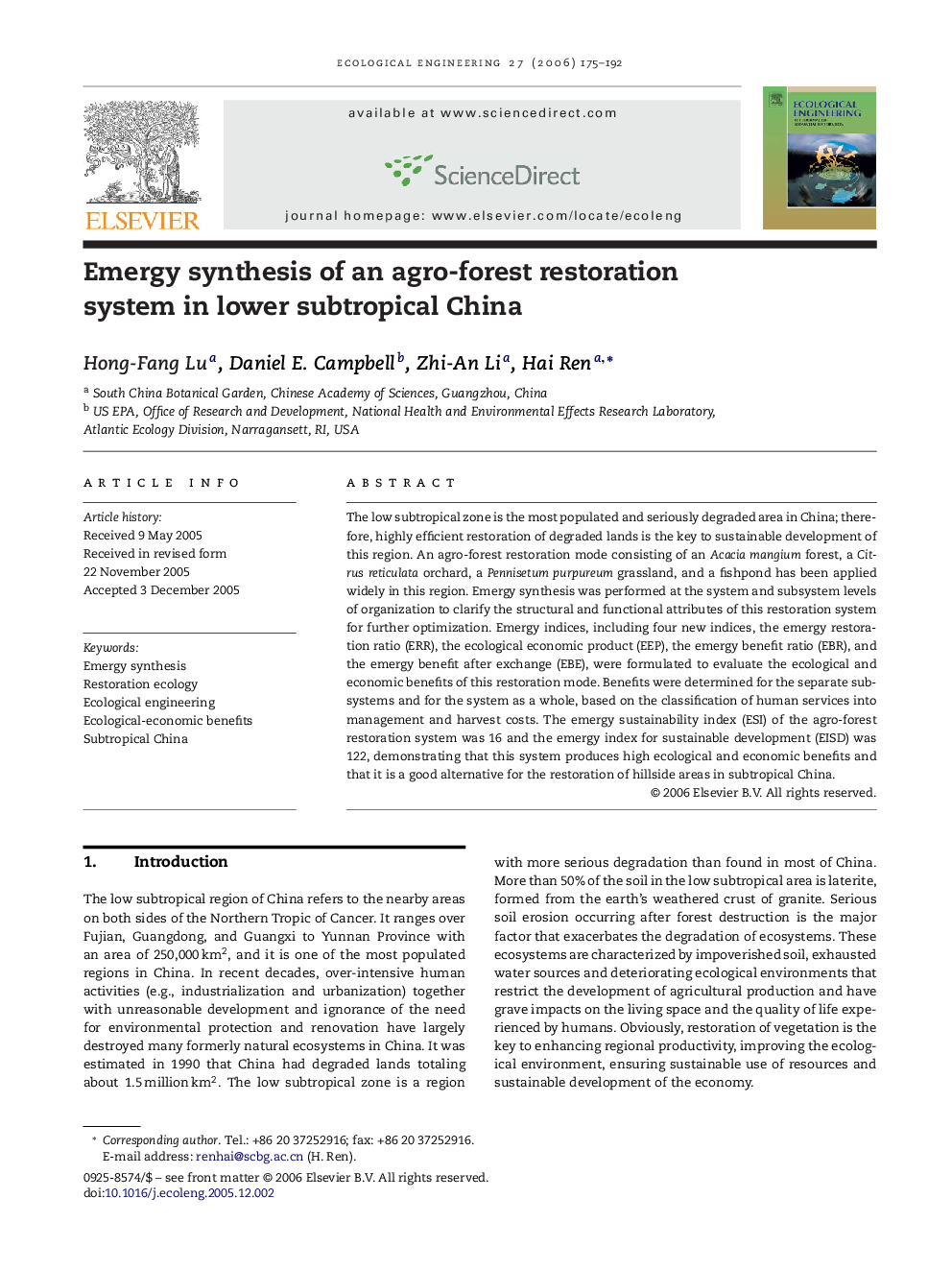| Article ID | Journal | Published Year | Pages | File Type |
|---|---|---|---|---|
| 4391294 | Ecological Engineering | 2006 | 18 Pages |
Abstract
The low subtropical zone is the most populated and seriously degraded area in China; therefore, highly efficient restoration of degraded lands is the key to sustainable development of this region. An agro-forest restoration mode consisting of an Acacia mangium forest, a Citrus reticulata orchard, a Pennisetum purpureum grassland, and a fishpond has been applied widely in this region. Emergy synthesis was performed at the system and subsystem levels of organization to clarify the structural and functional attributes of this restoration system for further optimization. Emergy indices, including four new indices, the emergy restoration ratio (ERR), the ecological economic product (EEP), the emergy benefit ratio (EBR), and the emergy benefit after exchange (EBE), were formulated to evaluate the ecological and economic benefits of this restoration mode. Benefits were determined for the separate subsystems and for the system as a whole, based on the classification of human services into management and harvest costs. The emergy sustainability index (ESI) of the agro-forest restoration system was 16 and the emergy index for sustainable development (EISD) was 122, demonstrating that this system produces high ecological and economic benefits and that it is a good alternative for the restoration of hillside areas in subtropical China.
Related Topics
Life Sciences
Agricultural and Biological Sciences
Ecology, Evolution, Behavior and Systematics
Authors
Hong-Fang Lu, Daniel E. Campbell, Zhi-An Li, Hai Ren,
